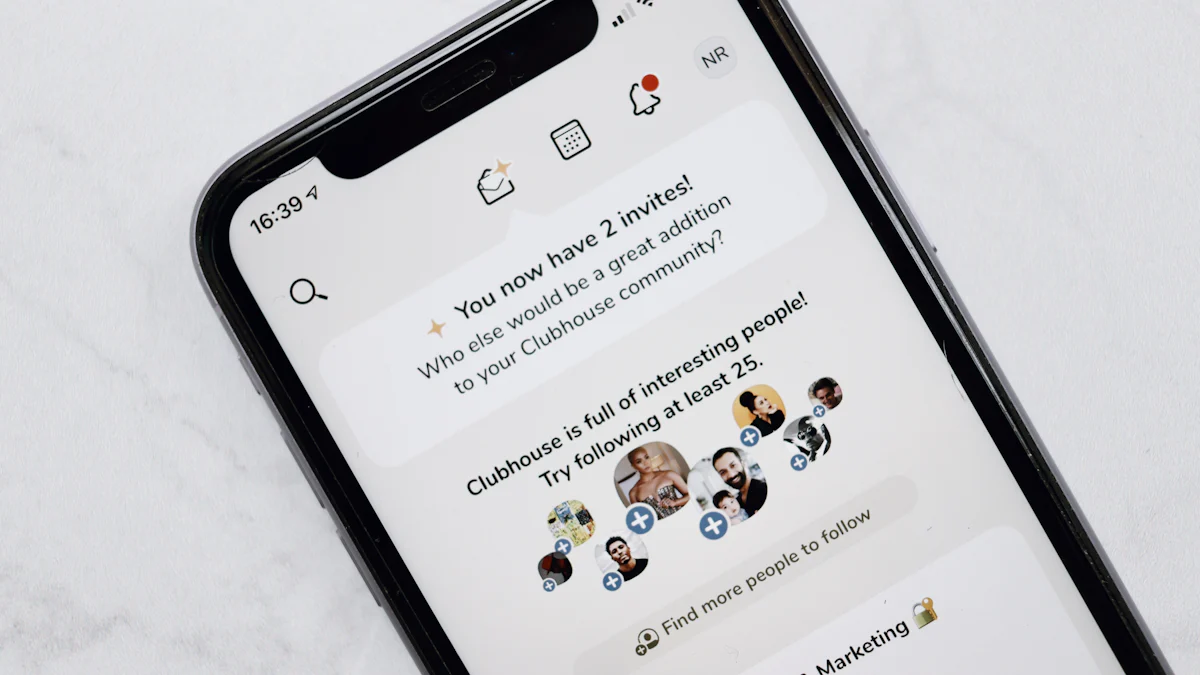Which Audio Platform Wins: Twitter Spaces or Clubhouse?

Audio platforms have taken the digital world by storm. The shift towards streaming and digital consumption has transformed how people engage with audio content. Choosing the right platform matters for users who want the best experience. Twitter Spaces and Clubhouse stand out in this space. Each offers unique features and experiences. Users must decide which suits their needs better. The debate of twitter spaces vs. clubhouse continues to capture attention. Both platforms offer exciting possibilities for live audio interaction.
Overview of Twitter Spaces
Features of Twitter Spaces
Integration with Twitter
Twitter Spaces integrates seamlessly with the existing Twitter platform. Users can easily start or join live audio conversations within the app. This integration allows for a smooth transition from tweeting to speaking, enhancing user engagement.
Accessibility and User Interface
The user interface of Twitter Spaces is intuitive and accessible. Users with over 600 followers can host a Space, while anyone with a Twitter account can join. The platform supports real-time interactions, including emoji reactions and tweet sharing within the Space.
Monetization Options
Twitter Spaces offers monetization through Ticketed Spaces. Creators can charge for access to their live audio events, providing opportunities for revenue generation. This feature supports content creators in building sustainable income streams.
Pros of Twitter Spaces
Existing Twitter User Base
The vast user base of Twitter benefits Twitter Spaces. Over 200 million daily users can access Spaces, providing a broad audience for hosts. This reach enhances the potential for community building and brand growth.
Ease of Use
Twitter Spaces offers ease of use with its integration into the Twitter app. Users familiar with Twitter will find it simple to navigate Spaces. The platform facilitates quick setup and participation in live audio discussions.
Cons of Twitter Spaces
Limited to Twitter Users
Twitter Spaces restricts access to those with Twitter accounts. Users outside the Twitter ecosystem cannot participate, limiting audience diversity. This exclusivity may hinder some potential interactions.
Feature Limitations
Some feature limitations exist within Twitter Spaces. The platform allows a maximum of 11 speakers per Space, which may restrict larger discussions. While Spaces offer recording options, the need for more advanced features might limit creative possibilities for some users.
Overview of Clubhouse
Features of Clubhouse
Standalone App Experience
Clubhouse offers a unique standalone app experience. Users can dive into real-time discussions without needing other platforms. The app provides a space dedicated solely to audio interaction. This focus makes it easy for users to engage in meaningful conversations.
Community Building Tools
Clubhouse excels in community building. Users can join or create Clubs around specific interests or topics. These Clubs foster connections and encourage ongoing dialogue. The platform supports networking with influencers and like-minded individuals.
Event Scheduling
Clubhouse includes event scheduling features. Users can plan and announce upcoming conversations. Adding events to personal calendars ensures no one misses out. This feature helps organize and promote discussions effectively.
Pros of Clubhouse
Dedicated Audio Platform
Clubhouse stands as a dedicated audio platform. Users find a space focused on voice-based interactions. This dedication enhances the quality of discussions. The platform encourages users to share valuable ideas and insights.
Strong Community Engagement
Clubhouse boasts strong community engagement. Users participate actively in various rooms. The platform's design promotes human-to-human conversation. This engagement creates a vibrant and interactive environment.
Cons of Clubhouse
Smaller User Base
Clubhouse has a smaller user base compared to other platforms. This limitation affects the reach of conversations. Users may find fewer participants in some discussions. The smaller audience can impact the diversity of interactions.
Invitation-Only Access
Clubhouse initially required invitations for access. This exclusivity limited user growth. Although now open to everyone, the past invite-only model still influences perception. Some users may feel hesitant to join due to this history.
Twitter Spaces vs. Clubhouse: Comparative Analysis

User Experience
Interface and Usability
Twitter Spaces offers a seamless experience for users familiar with Twitter. The integration makes navigation easy. Users find Spaces intuitive and straightforward. Clubhouse provides a unique standalone app. The focus on audio creates a dedicated space for conversations. Both platforms have user-friendly interfaces, but preferences may vary.
Audience Reach
Twitter Spaces benefits from Twitter's massive user base. Over 200 million daily users can access Spaces. This reach gives hosts a broad audience. Clubhouse has a smaller user base. The platform's exclusivity once limited growth. Users may notice fewer participants in some rooms.
Content and Community
Types of Conversations
Twitter Spaces supports diverse conversations. Users can discuss trending topics or niche interests. The integration with Twitter allows sharing tweets in real-time. Clubhouse focuses on voice-only interactions. Users enjoy deep discussions without distractions. Both platforms offer unique content experiences.
Community Interaction
Twitter Spaces encourages interaction through emoji reactions. Users can engage with hosts and speakers easily. Clubhouse fosters community through Clubs. Users join groups based on shared interests. Both platforms promote strong community bonds. The approach to interaction differs between them.
Technical Aspects
Audio Quality
Twitter Spaces generally provides better audio quality. The platform ensures clear sound for listeners. Clubhouse may face occasional audio issues. User connections can affect clarity on both platforms. Audio quality remains crucial for user satisfaction.
Platform Stability
Twitter Spaces offers stable performance. Users experience minimal disruptions during sessions. Clubhouse also maintains reliable stability. The focus on audio ensures smooth operation. Both platforms prioritize a stable user experience.
Current Trends and Use Cases

Popularity and Growth
Recent Developments
Twitter Spaces has seen a surge in interest from marketers. Many brands have chosen Twitter Spaces as the top emerging platform for investment. The integration with Twitter's vast user base makes it appealing. Users find it easy to access and engage with content. Clubhouse, on the other hand, has struggled to maintain the same momentum. The initial buzz around Clubhouse has faded, and fewer users are active daily.
Market Position
Twitter Spaces holds a strong position in the market. Over 200 million daily active users engage with Spaces. This reach provides a significant advantage in the twitter spaces vs. clubhouse debate. Clubhouse reports around 4.9 million daily users, which limits its influence. The difference in user numbers highlights the contrasting popularity of these platforms.
Specific Use Cases
Business and Networking
Twitter Spaces offers valuable opportunities for business networking. Professionals use Spaces to host discussions and share insights. The platform supports real-time interaction with a large audience. Clubhouse also provides networking opportunities but on a smaller scale. Users enjoy intimate conversations with industry leaders. Both platforms cater to different networking needs.
Entertainment and Leisure
Entertainment thrives on both platforms. Twitter Spaces hosts live events, interviews, and Q&A sessions. Users enjoy engaging with celebrities and influencers. Clubhouse offers a more relaxed atmosphere for casual chats and storytelling. The focus on voice-only interaction creates a unique experience. Each platform provides distinct entertainment options for users.
Choosing between Twitter Spaces and Clubhouse depends on your needs. Twitter Spaces offers a broad reach with over 200 million users. This platform integrates well with Twitter, making it easy for existing users. Clubhouse provides a unique audio experience with strong community engagement. The choice in the twitter spaces vs. clubhouse debate hinges on what you value more: reach or community. Both platforms have their strengths and can serve different purposes. Audio platforms will continue to evolve, offering even more exciting possibilities for live interaction.
See Also
Mastering Twitter Spaces: A Comprehensive Guide
Anonymous Listening on Twitter Spaces: A How-To
Effortless Discovery of Twitter Spaces

